
The Cathedral Church of St Peter and St Wilfrid, commonly known as Ripon Cathedral, and until 1836 known as Ripon Minster, is a cathedral in Ripon, North Yorkshire, England. Founded as a monastery by monks of the Irish tradition in the 660s, it was refounded as a Benedictine monastery by St Wilfrid in 672. The church became collegiate in the tenth century, and acted as a mother church within the large Diocese of York for the remainder of the Middle Ages. The present church is the fourth, and was built between the 13th and 16th centuries. In 1836 the church became the cathedral for the Diocese of Ripon. In 2014 the Diocese was incorporated into the new Diocese of Leeds, and the church became one of three co-equal cathedrals of the Bishop of Leeds.

Doncaster Minster, formally the Minster and Parish Church of St George, is the Anglican minster church of Doncaster, South Yorkshire, England. It is a grade I listed building and was designed by architect designer George Gilbert Scott. The church was built in 1854–1858 to replace an earlier building destroyed by fire. It is an active place of worship and has a Schulze organ, a ring of eight bells, and a celebrated clock by Dent. The church is one of two parish churches to have minster status in South Yorkshire. The other is the minster church of Rotherham.
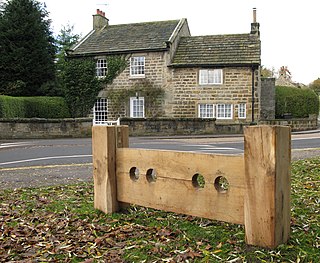
Pannal is a village in the Harrogate district of North Yorkshire, England. Historically part of the West Riding of Yorkshire, it is situated to the immediate south of Harrogate. Since 2016 it has formed part of the new civil parish of Pannal and Burn Bridge. The village is served by Pannal railway station on the Harrogate (Railway) Line between Leeds and York.
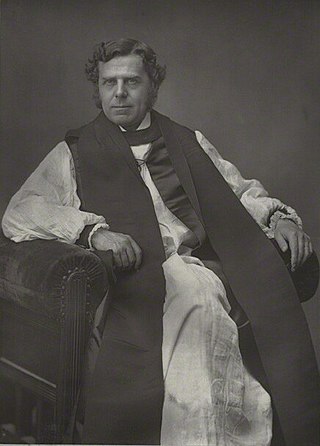
William Boyd Carpenter was an English cleric in the Church of England who became Bishop of Ripon and Royal Chaplain to Queen Victoria.

Leeds Minster, or the Minster and Parish Church of Saint Peter-at-Leeds is the minster church of Leeds, West Yorkshire, England. It stands on the site of the oldest church in the city and is of architectural and liturgical significance. A church is recorded on the site as early as the 7th century, although the present structure is a Gothic Revival one, designed by Robert Dennis Chantrell and completed in 1841. It is dedicated to Saint Peter and was the Parish Church of Leeds before receiving the honorific title of "Minster" in 2012. It has been designated a Grade I listed building by Historic England.

St Wilfrid's Church, Harrogate is an Anglican parish church in the town of Harrogate, North Yorkshire, England. It is a Grade I listed building, the only such building in Harrogate. It was designed by the architect Temple Lushington Moore and is one of his best-known works. It is designated as a "Major Parish Church" and is the 38th largest parish church in England.

Keith Michael Jukes was a senior Church of England priest. From 2007 to 2013, he was the dean of Ripon.
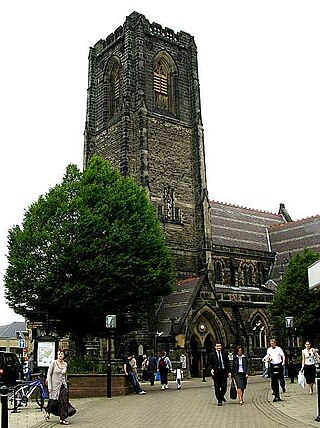
St Peter's Church, Harrogate is a parish church in the Church of England located in Harrogate, North Yorkshire, England. It is a Grade II listed building.

Christ Church, High Harrogate is a parish church in the Church of England located in Harrogate, North Yorkshire, England. It was the first church building to be built in Harrogate and is today home to a thriving congregation and – along with the attached Parish Centre – an important focus of community activities.
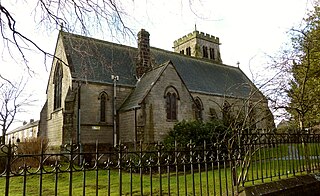
Beckwithshaw is a village and civil parish in the Harrogate district of North Yorkshire, England about 2.5 miles (4 km) south-west of Harrogate.

West Park United Reformed Church is located in the West Park area of Harrogate, England, and is a Grade II listed building. It was designed in Nonconformist Gothic style as West Park Congregational Church by Lockwood & Mawson and completed in 1862 for around £5,000. Along with Belvedere Mansion across the road, it was intended as part of the prestigious entrance to the Victoria Park development. For the Congregationalists it was meant to house an increasing congregation of visitors brought to the spa town by the recently-built railways. It became a United Reformed church in 1972.

St Mary's Church, Harrogate is a Grade II* listed redundant parish church in Harrogate, North Yorkshire, England. The successor of the church, which uses the former church hall, is now known as Kairos Church.

St Robert's Church, Pannal, North Yorkshire, England, also known as St Robert of Knaresborough Parish Church, is a Grade II* listed building. A 13th-century wooden church dedicated to St Michael was rebuilt in sandstone in the 14th century by monks of the Trinitarian Order from Knaresborough Priory. It was perhaps then that it was rededicated to Robert of Knaresborough. Its nave was rebuilt in the 18th century, restored in the 19th and remodelled in the 20th. Extensions were added in the 20th century. It is a parish church, and the vicar also serves the Church of St Michael and All Angels, Beckwithshaw.
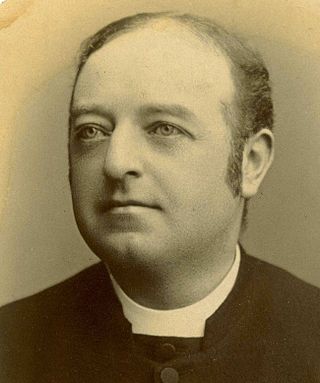
Charles Farrar Forster was curate of the parish of Lockwood near Huddersfield, vicar of St Andrew's Church in Huddersfield, and the first vicar of the Church of St Michael and All Angels, Beckwithshaw.

William Swinden Barber FRIBA, also W. S. Barber or W. Swinden Barber, was an English Gothic Revival and Arts and Crafts architect, specialising in modest but finely furnished Anglican churches, often with crenellated bell-towers. He was based in Brighouse and Halifax in the West Riding of Yorkshire. At least 15 surviving examples of his work are Grade II listed buildings, including his 1875 design for the Victoria Cross at Akroydon, Halifax. An 1864 portrait by David Wilkie Wynfield depicts him in Romantic garb, holding a flower. He served in the Artists Rifles regiment in the 1860s alongside Wynfield and other contemporary artists.

The Church of St Thomas, Thurstonland, West Yorkshire, England, is an Anglican church. It is an Arts and Crafts building in Gothic Revival style, designed by James Mallinson and William Swinden Barber, and completed in 1870. The building was funded by William Legge, 5th Earl of Dartmouth, and it was consecrated by Robert Bickersteth, Bishop of Ripon. The total height of the tower and spire is 109 feet (33 m), and the nave contains an arch-braced hammerbeam roof.

The Church of St Thomas the Apostle, Killinghall, is an Anglican parish church in Killinghall, North Yorkshire, England. It was designed in 1879 by William Swinden Barber when the parish of Ripley was split to create the additional parish of Killinghall, and a new building was required to accommodate a growing congregation. It was opened in 1880. Among the early vicars posted in this benefice were two canons, Sydney Robert Elliston and Lindsay Shorland-Ball, and the Venerable Robert Collier, an Irish missionary who served in India and Africa.

Canon Sydney Robert Elliston MA was a journalist, vicar, and canon of Ripon Cathedral. Two of his brothers were William Rowley Elliston and George Elliston MP. He was involved with the formation of the Ripon Diocesan Board of Finance in 1913, and was its secretary from 1914 to 1935. At his funeral it was said of him that, "The diocese of Ripon owed a great debt to the work of Canon Elliston in laying down sound principles of Church finance." While looking after the finances of Ripon diocese, he was at the same time vicar of one of north-east England's Barber churches: the Church of St Thomas the Apostle, Killinghall (1880), designed by William Swinden Barber.
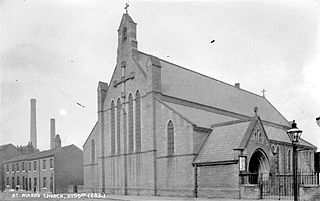
The former St Mark's Church, Old Leeds Road, Huddersfield, was an Anglican parish church in West Yorkshire, England. It was previously known as St Mark's, Leeds Road, before the road name was changed. This building was designed in 1886 by William Swinden Barber when the parish of St Peter's was split and a new building was required to accommodate a growing congregation. It was opened in 1887. Among the vicars posted in this benefice were the very popular Canon Percy Holbrook, the notoriously unfortunate Reverend Jonas Pilling who was involved in a standoff with his congregation for many years, the sociable Reverend Robert Alfred Humble who died in mysterious circumstances, and the eloquent preacher Reverend Joseph Miller, who had previously been a Congregational minister. The building was sold by the Church of England in 2001, and it has been converted into a block of offices.

The Church of All Saints, Harlow Hill, Harrogate, North Yorkshire, England, is a grade II listed mission church, or chapel of ease, completed in 1871 on land donated by Henry Lascelles, 4th Earl of Harewood, within the parish of St Mary. It was consecrated by the Bishop of Ripon in 1871. The building was designed with a round bell tower, in Gothic Revival style, by Isaac Thomas Shutt and Alfred Hill Thompson. After some years of closure due to structural problems, as of 2014 it was being restored for use by a funeral director's company.










































